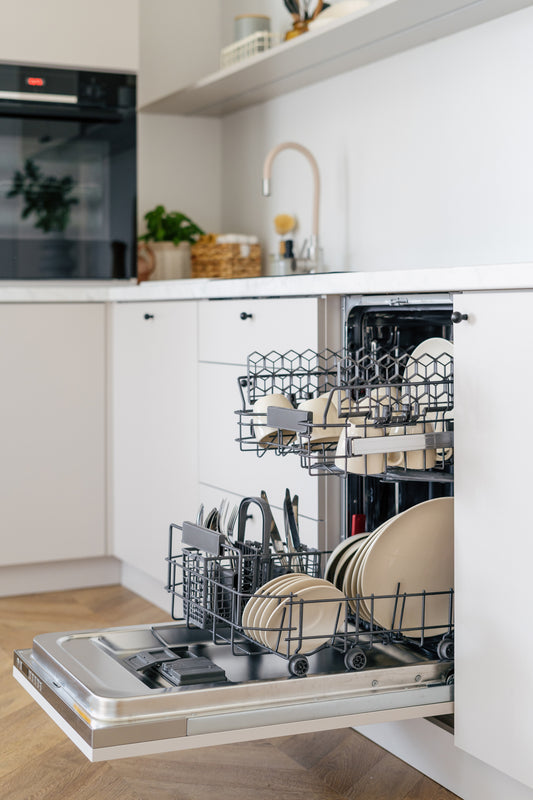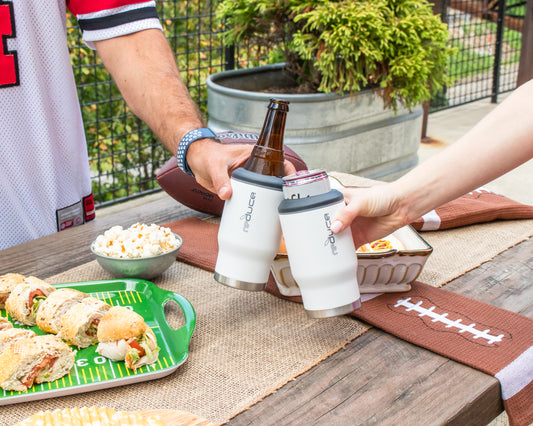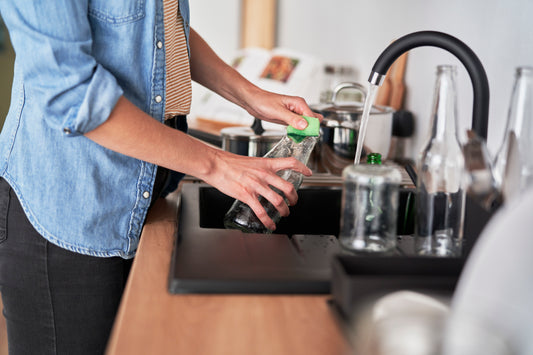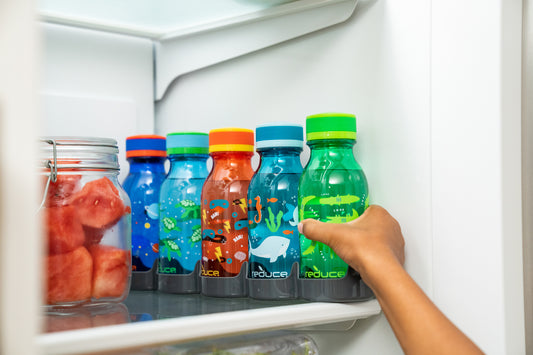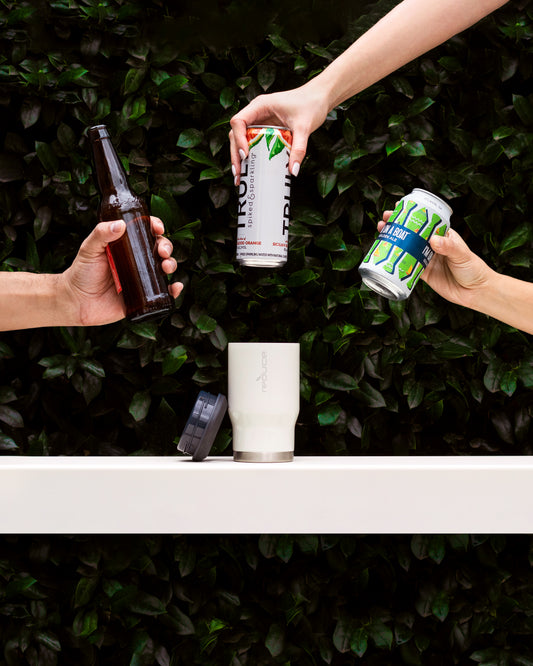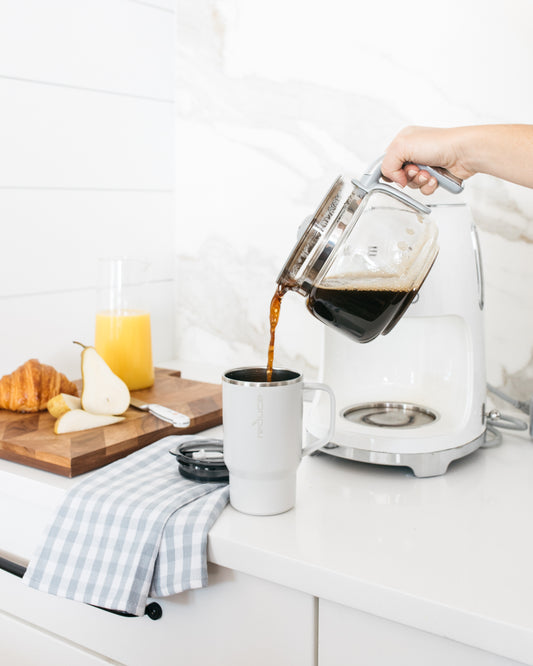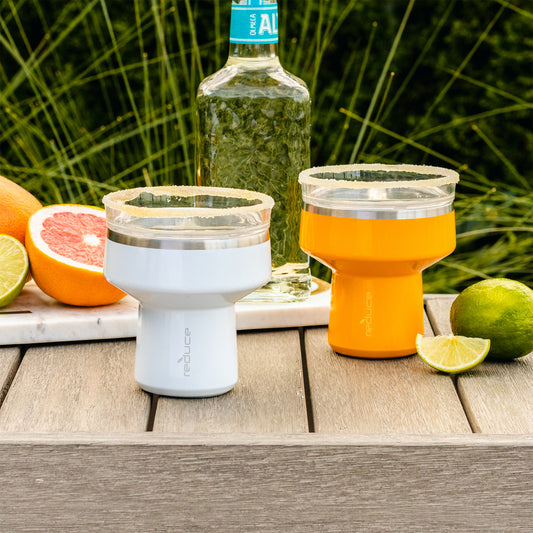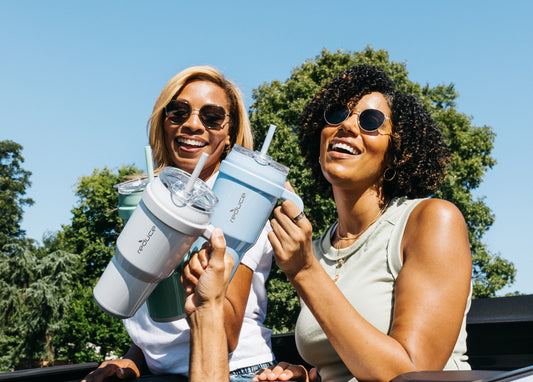Our products are double-wall vacuum insulated, so you probably see that phrase a lot on our site.
But what does it mean, and is it really worth the hype? We think so, and here’s why.
Anatomy of a Double Wall Vacuum Insulated Bottle
First, let’s break down what double-wall vacuum insulation is. What are the components, and what do they do?
Outer Wall
The outer wall of the insulated bottle is the part that you see and hold in your hand. This outer wall is made of high-quality, food-grade 18/8 stainless steel.
Inner Wall
The inner wall is also made of stainless steel. It’s the layer that you see inside of the cup, the layer that your drink touches.
It’s important to note that the inner wall is not the other side of the outer wall! They are two distinct pieces of stainless steel.
Vacuum-Insulated Layer Between
So, why is there a vacuum-insulated layer between and what does it do?
Between the inner and outer stainless steel walls is a gap that is vacuum-sealed. That vacuum seal keeps air from getting in between the two walls. This vacuum-insulated layer keeps your hot drinks hot and your cold drinks cold.
But how does it know? Why doesn’t it make your hot drinks cold or your cold drinks hot? That sounds like magic!
Not Magic, But it is Science
The vacuum-sealed space between the walls affects the way heat conduction and convection. Before you strain to remember your high school science class, we’ll break it down for you.
First of all, when you talk about heat from a scientific standpoint, you are talking about temperature, not warmth. In other words, in science, there is no “cold.” There are only levels of heat, and when something feels cold that just means there is a lack of heat.
Heat has to do with the speed of the vibrating molecules. Fast means high heat and slow means low heat. These molecules will naturally move to reach an equilibrium.
When you pour a cup of coffee in a regular mug in a room-temperature house, it will “go cold” which really just means the heat will decrease and it will reach equilibrium at room temperature. It’s not going to turn freezing cold.
The same goes with a regular glass of water. It may be cold when you pour it, but it will turn to room temperature eventually when the molecules reach equilibrium.
To make it super simple, changes in heat happen by the way molecules move when they are close together.
So, what does this have to do with the vacuum-insulated layer? Well, the vacuum separates the molecules in your drink (that dictate the level of heat) from the molecules in the air, so the molecules in your drink won’t be able to reach equilibrium with the temperature of the air in your environment. The vacuum space does not allow room for air molecules, remember?
It’s not the two walls themselves, but the lack of air in between them that preserves the level of heat in your drink.
Rubber Gasket
The rubber gasket is the ring of rubber that goes around the inside of the lid. The purpose of the rubber gasket is to seal the drink so that the vacuum insulation can do its thing.
Think about it; if the double-wall vacuum insulation protects the drink from the air molecules, but then there is no lid or seal on top, then the air molecules will be exposed on the top and the vacuum around the sides is pointless.
The lid’s rubber gasket prevents air molecules from getting into the inside of the cup and changing the temperature of your drink.
Materials Used to Make Double Wall Vacuum-Insulated Bottles
The materials used to make the double-wall vacuum-insulated bottles are an important part of making the vacuum work right.
The inner and outer walls are made with high-quality food-grade 18/8 stainless steel because steel is the best material to hold a vacuum. It is difficult to create a functional vacuum seal with other materials such as plastic because they are porous and allow molecules to slip through.
When it comes to making double wall vacuum-insulated bottles, using stainless steel is the way to go.
Some brands will try to make vacuum-sealed cups with clear plastic, and after a few washes, you’ll start to see water or condensation build up between the layers. That won’t happen with stainless steel because it doesn’t leak and doesn’t allow molecules (like water, air, or dust) to get past the wall.
Our Bottles Keep Cold Water Cold (Up to 24 Hours) and Hot Water Hot (Up to 12 Hours)
Our double wall vacuum-insulated bottles will keep your cold drinks cold for up to 24 hours, and your hot drinks hot for up to 12 hours.
Bottles keep things colder longer than they can hot due to average room temperature. Cold drinks are closer to room temperature than hot drinks, so there's less heat transfer. That's just science.
Join the Hype With Reduce Everyday!
We definitely think that double wall vacuum insulated bottles are worth the hype! No more room temperature coffee or lukewarm water, just your drinks at the temperature you want them to be.
Join the hype with Reduce Everyday, and check out all of our double wall vacuum-insulated products and order your favorite today. We have cups in bottles in a variety of different sizes and colors, so there’s sure to be one that perfectly fits your needs.

Subhead goes here
is simply dummy text of the printing and typesetting industry. Lorem Ipsum has been the industry's standard dummy text ever since the 1500s, when an unknown printer took a galley of type and scrambled it to make a type specimen book. It has survived not only five centuries, but also the leap into
Subhead goes here
is simply dummy text of the printing and typesetting industry. Lorem Ipsum has been the industry's standard dummy text ever since the 1500s, when an unknown printer took a galley of type and scrambled it to make a type specimen book. It has survived not only five centuries, but also the leap into
Shop Now





